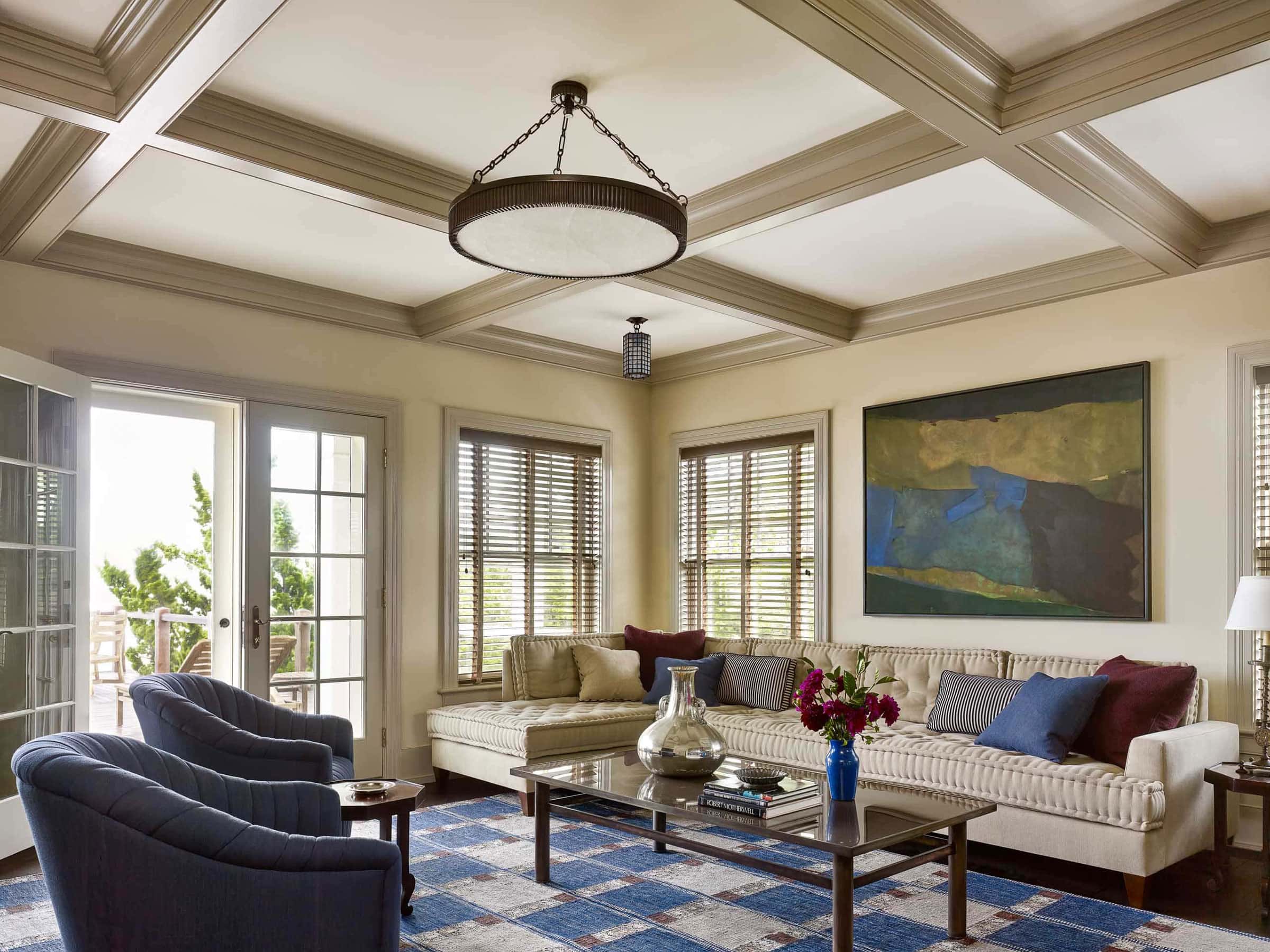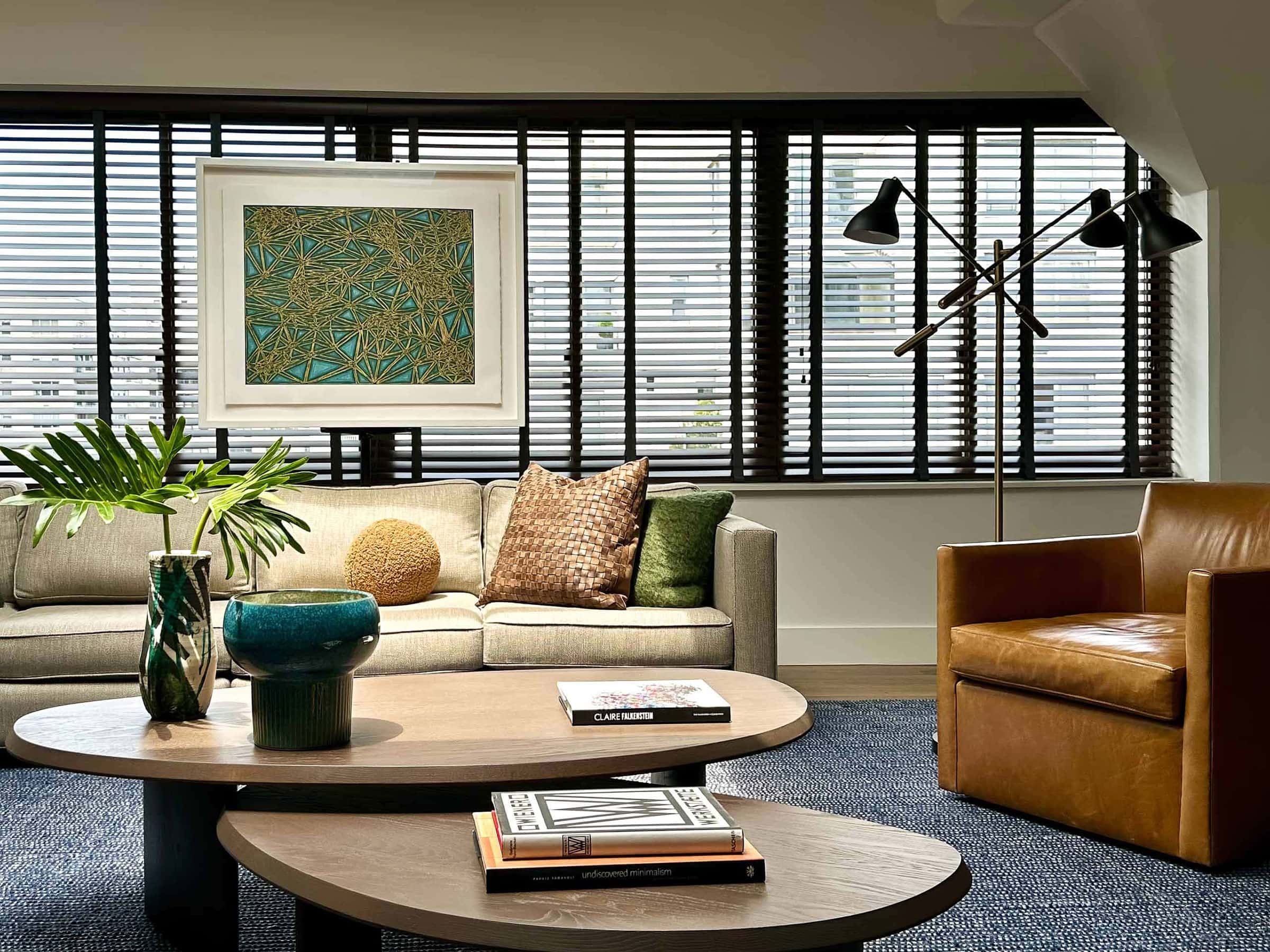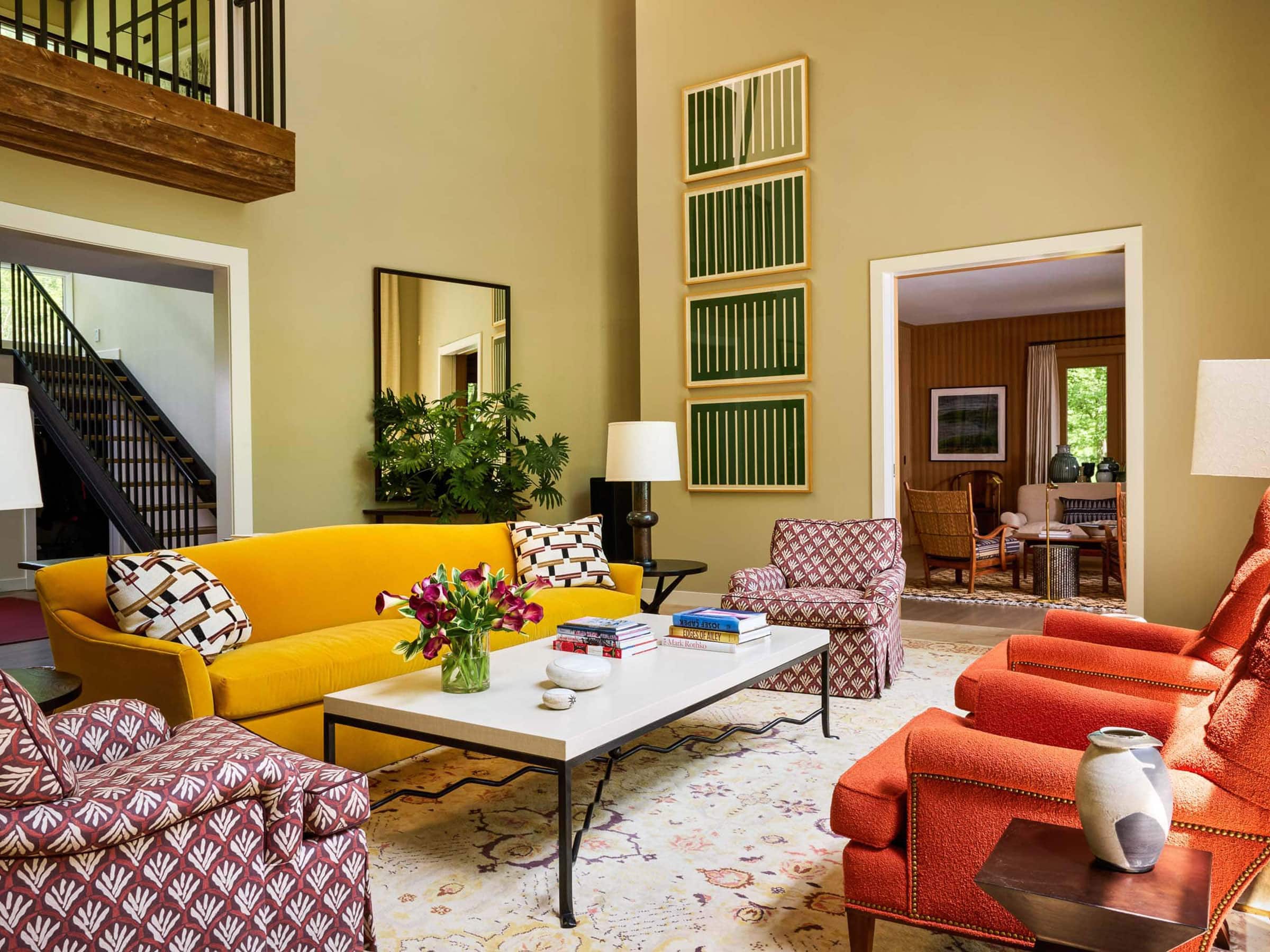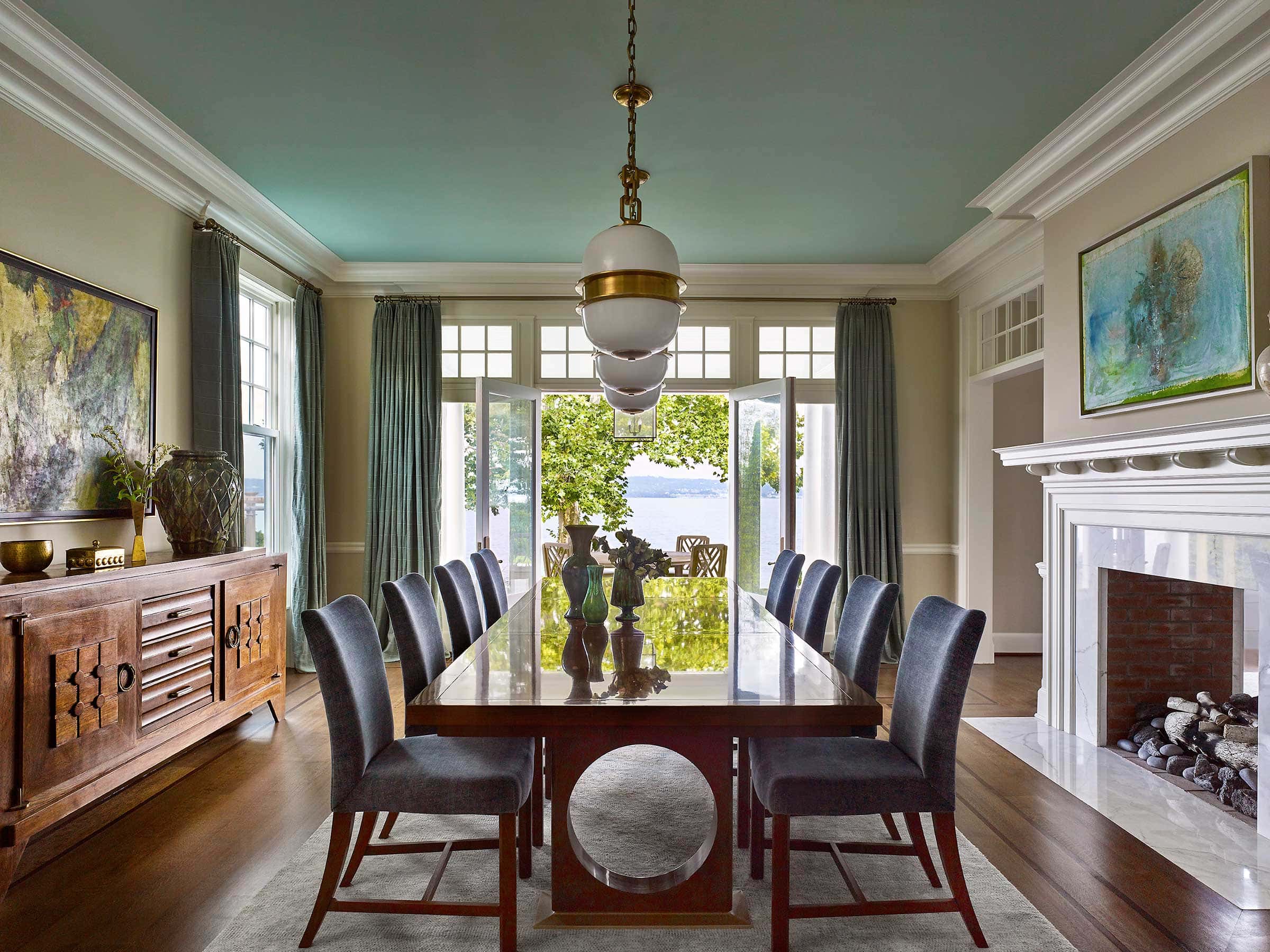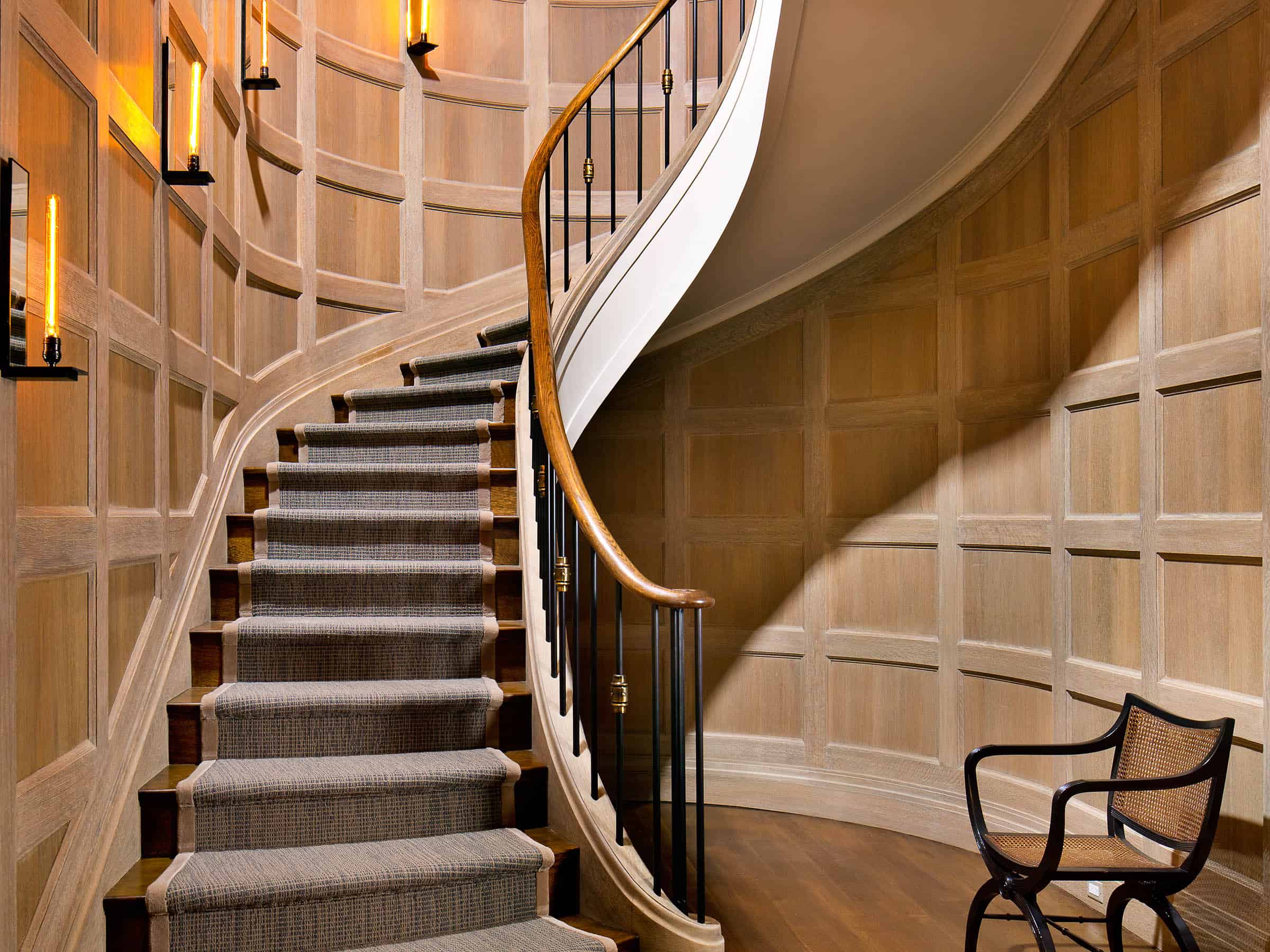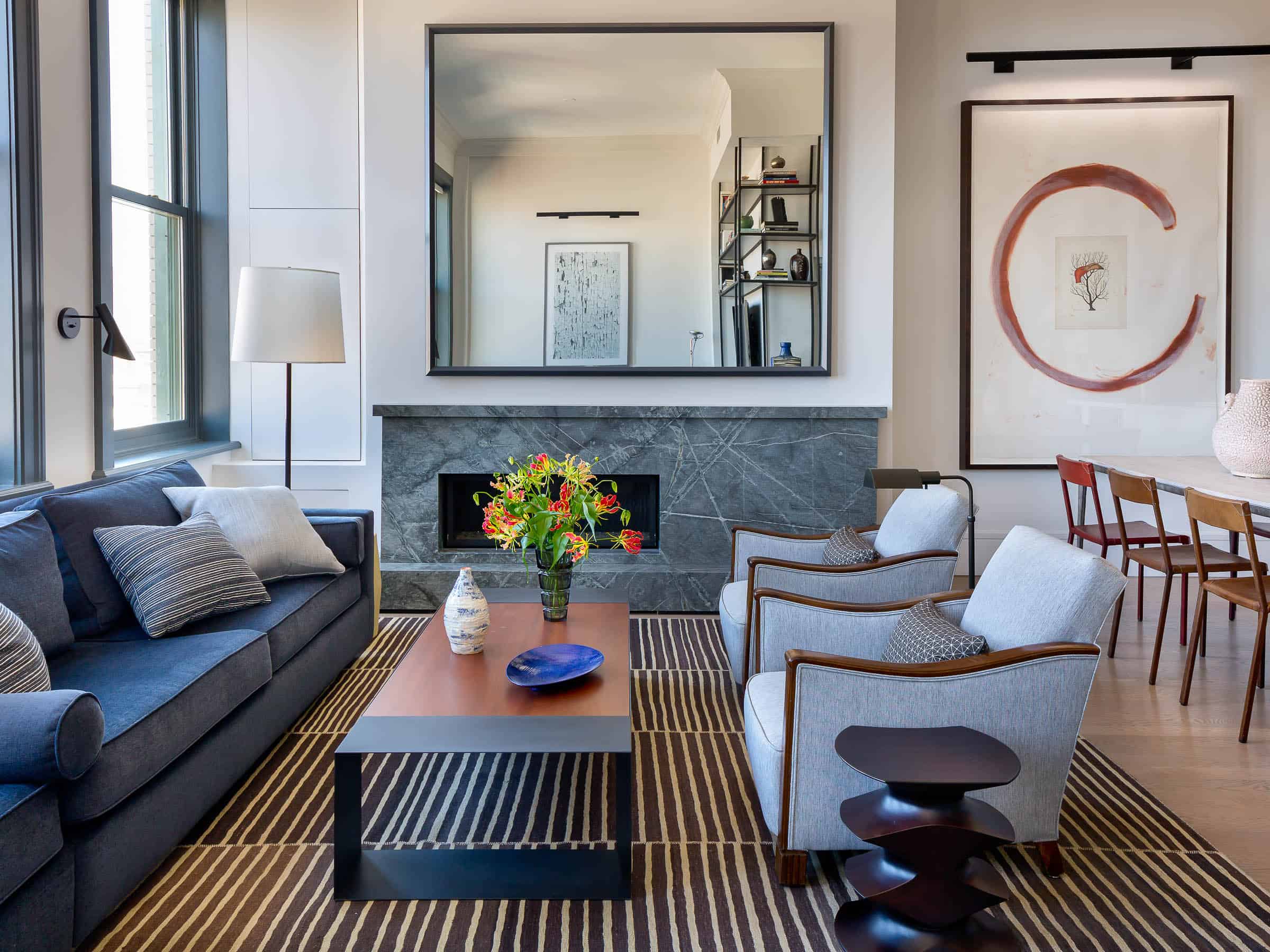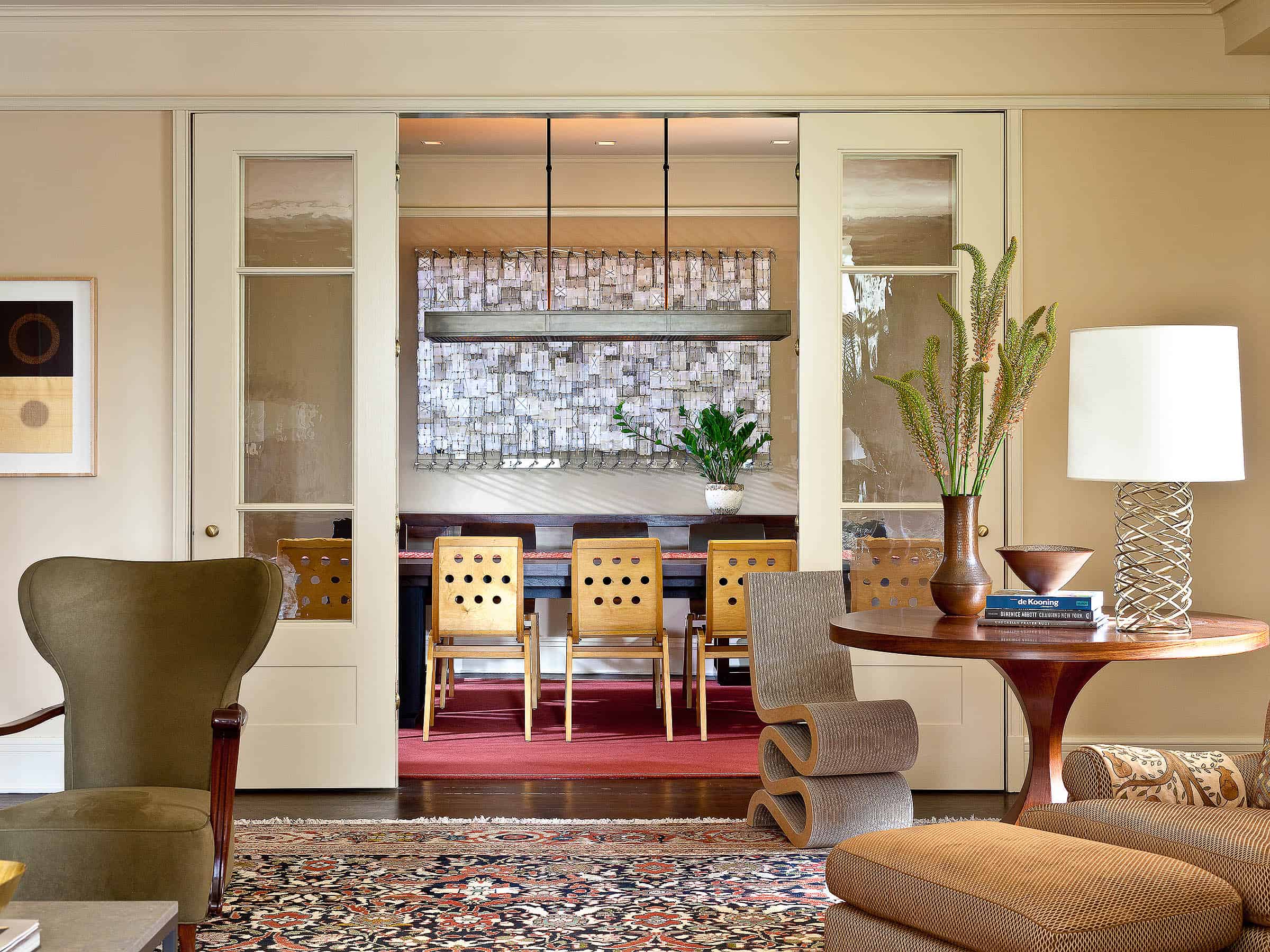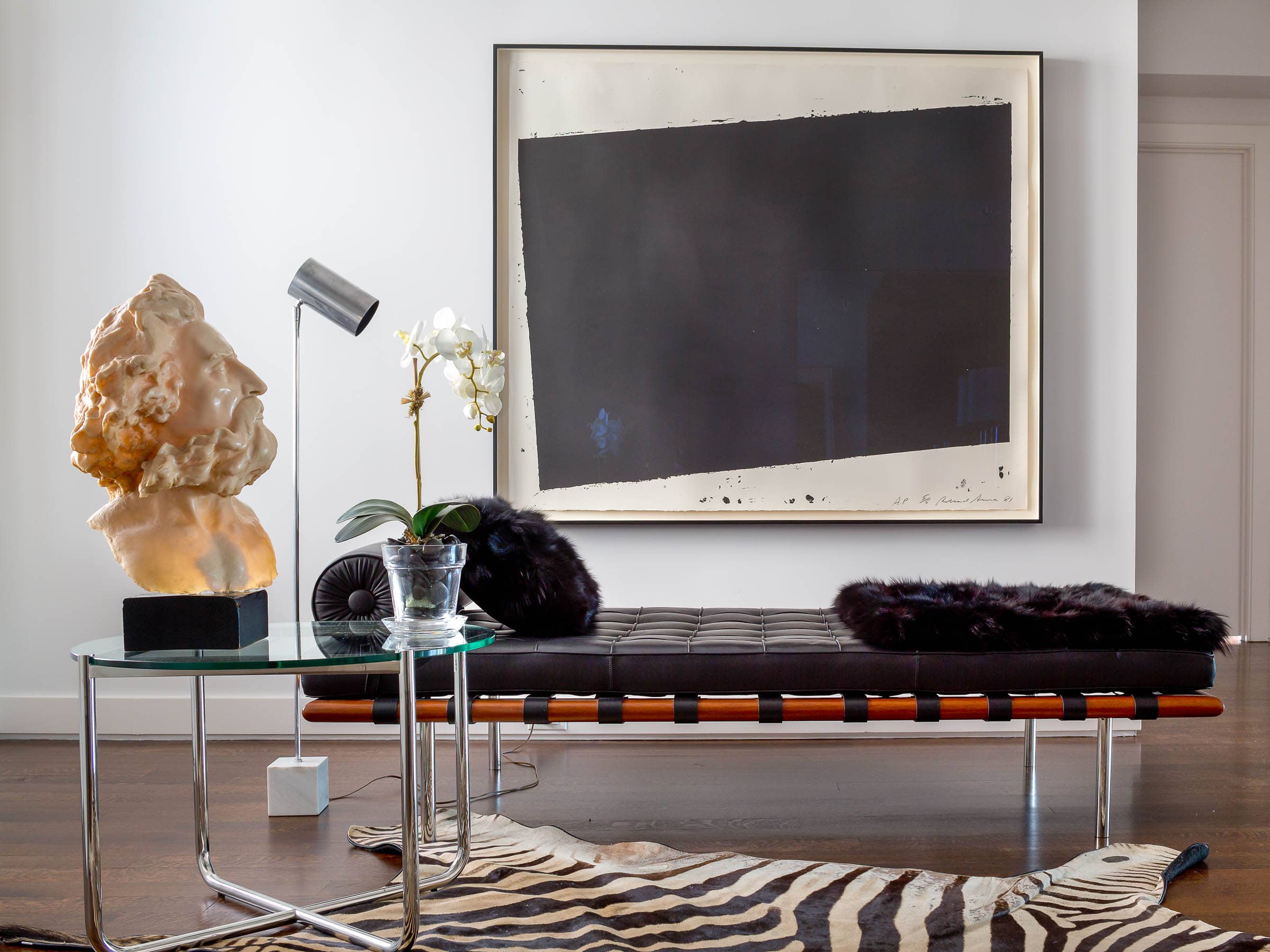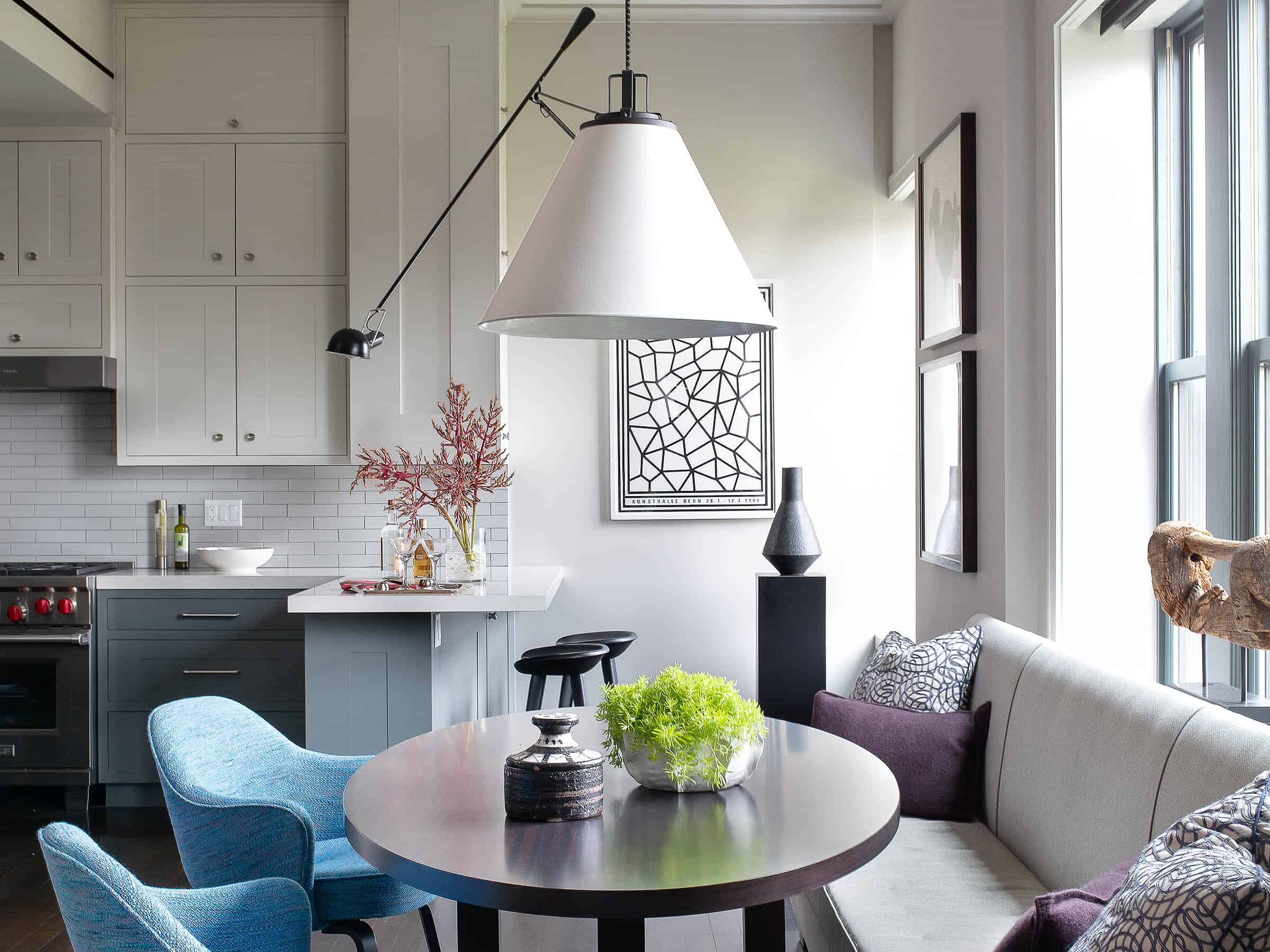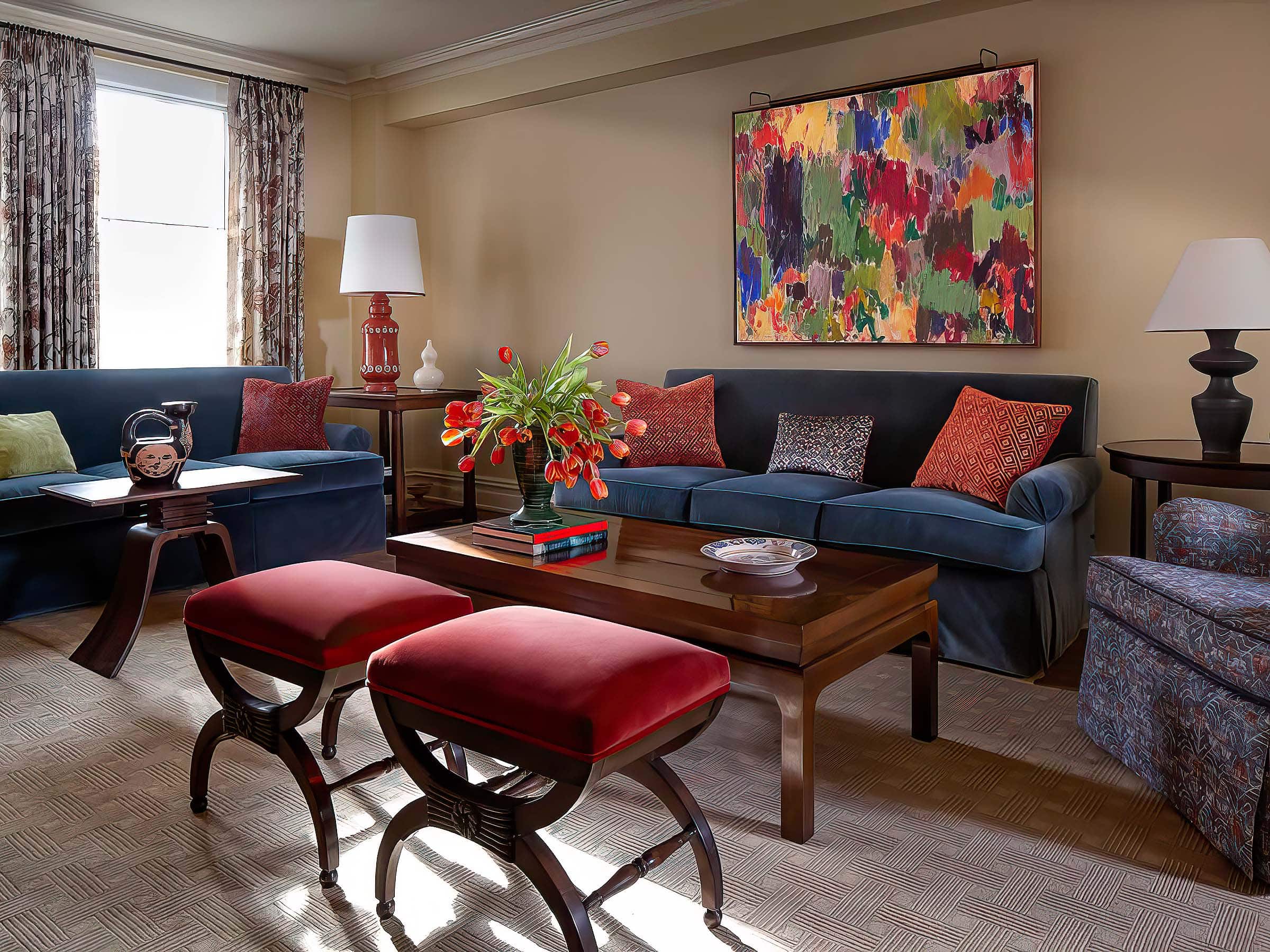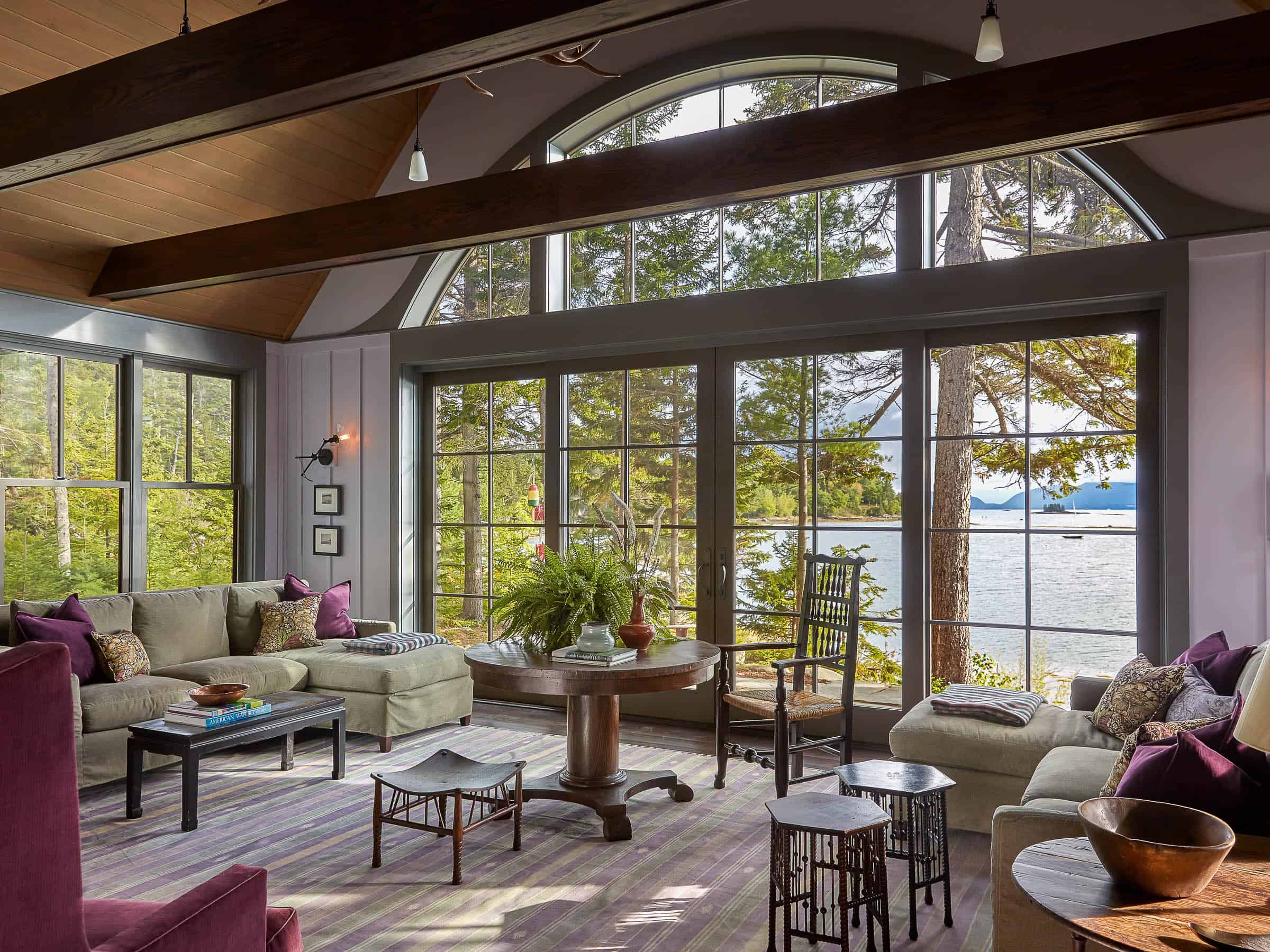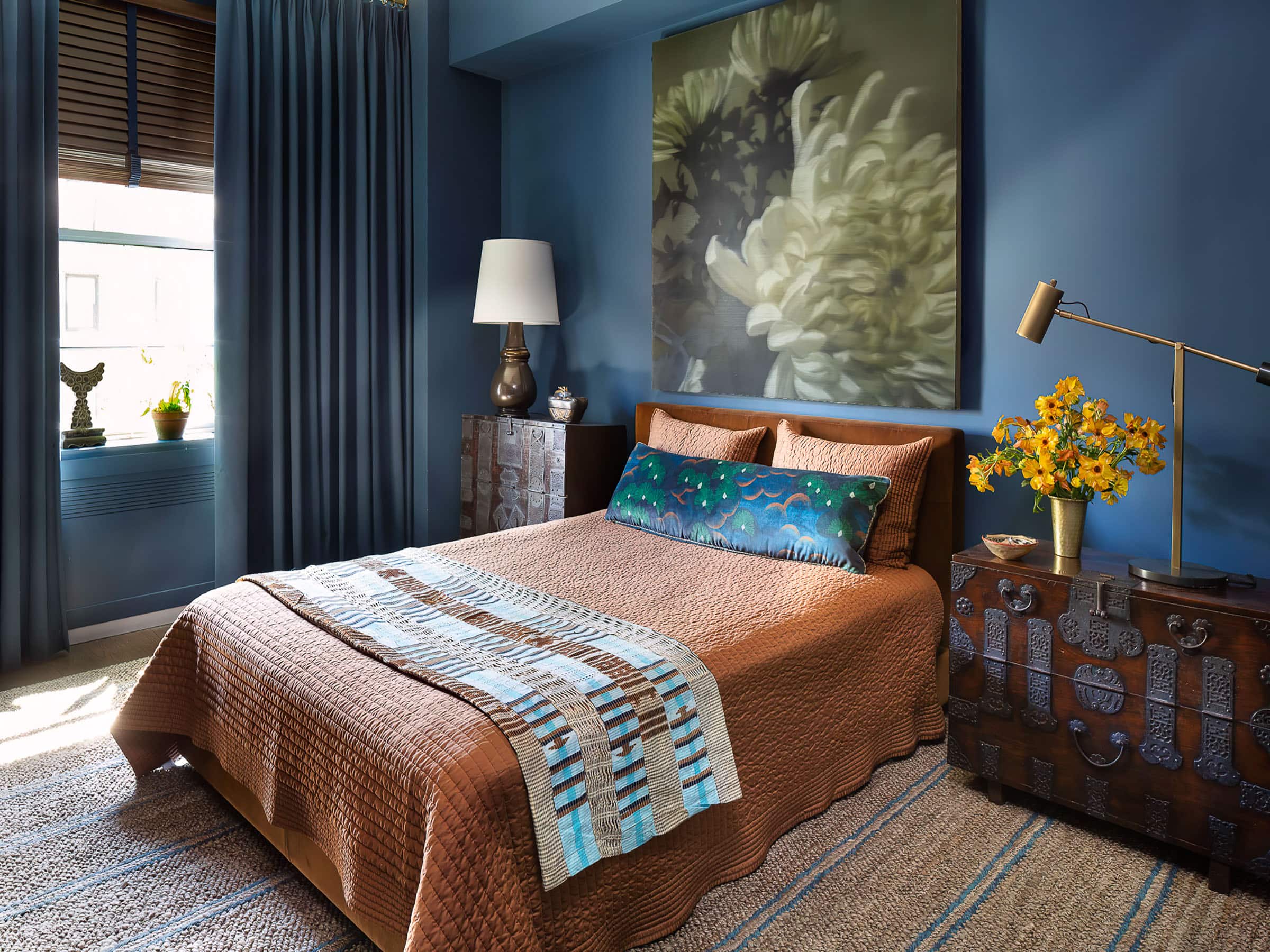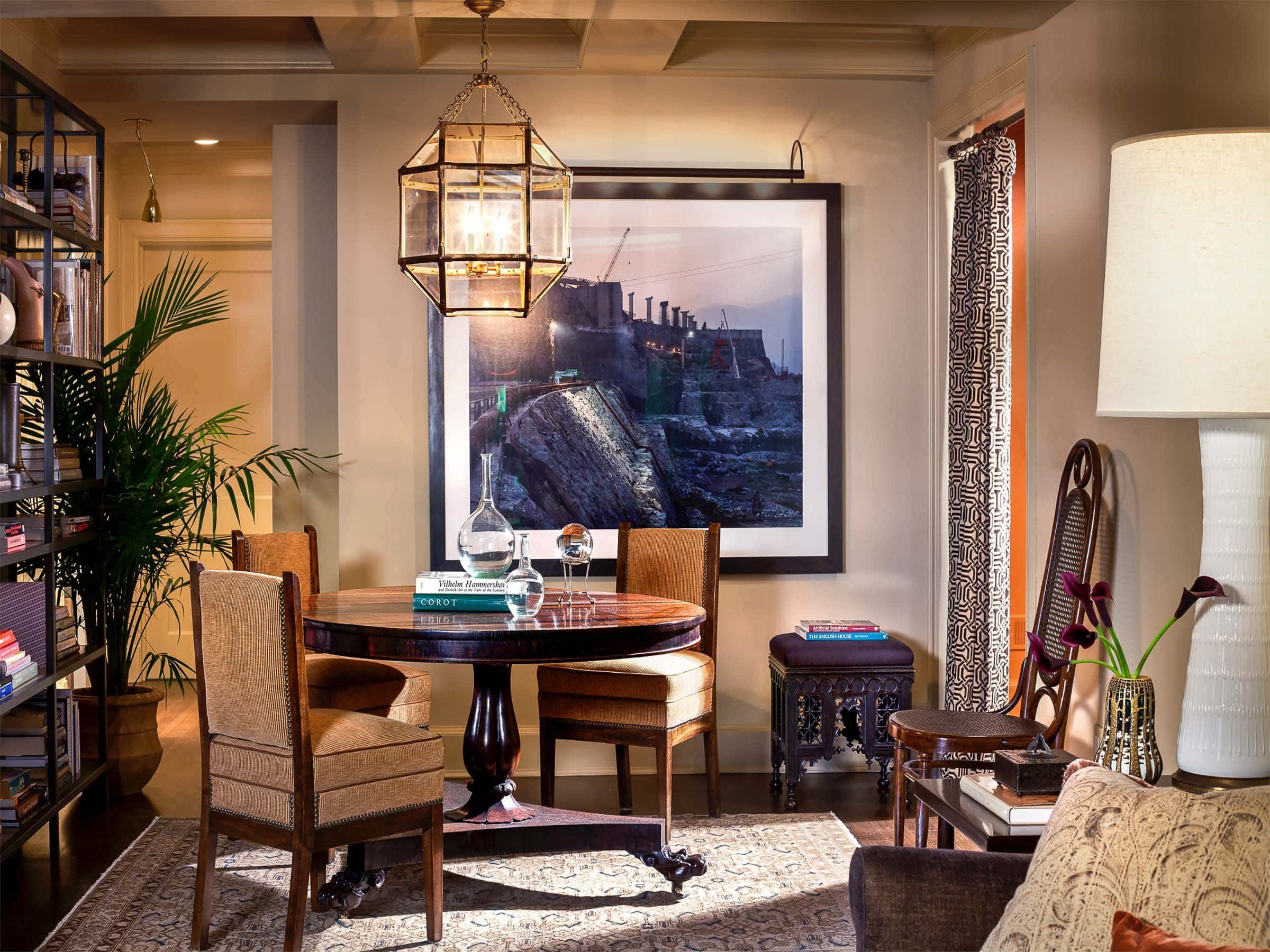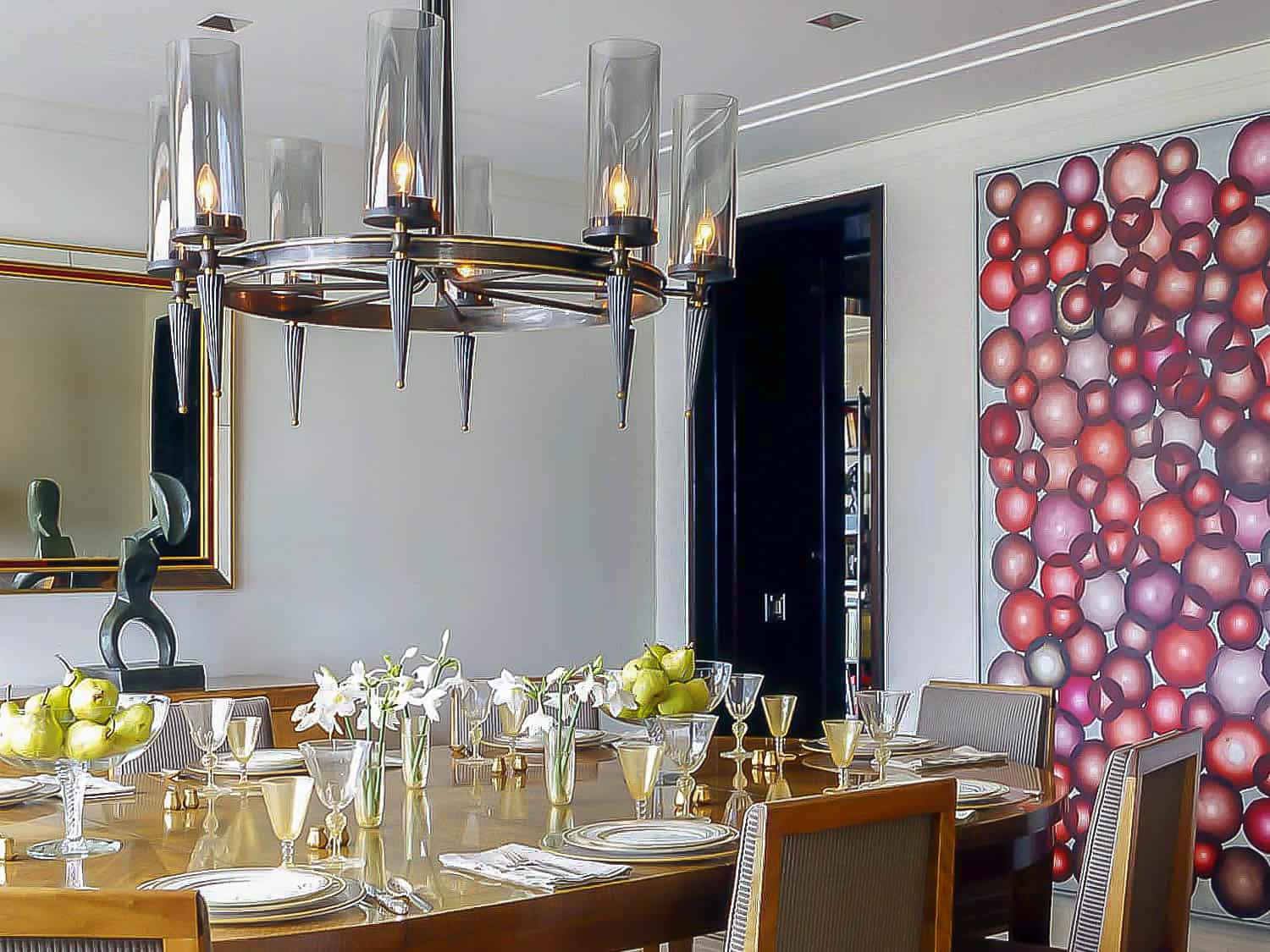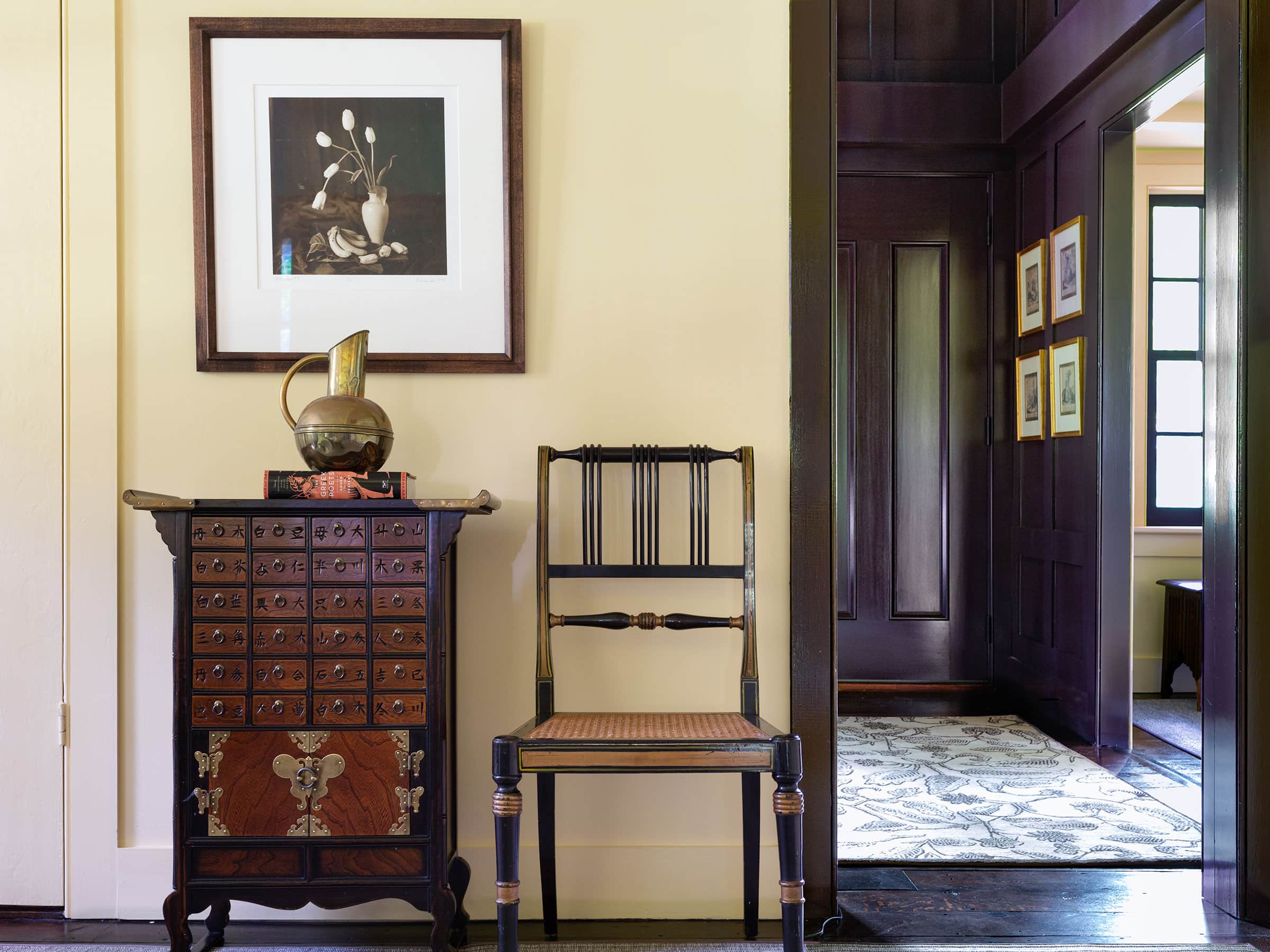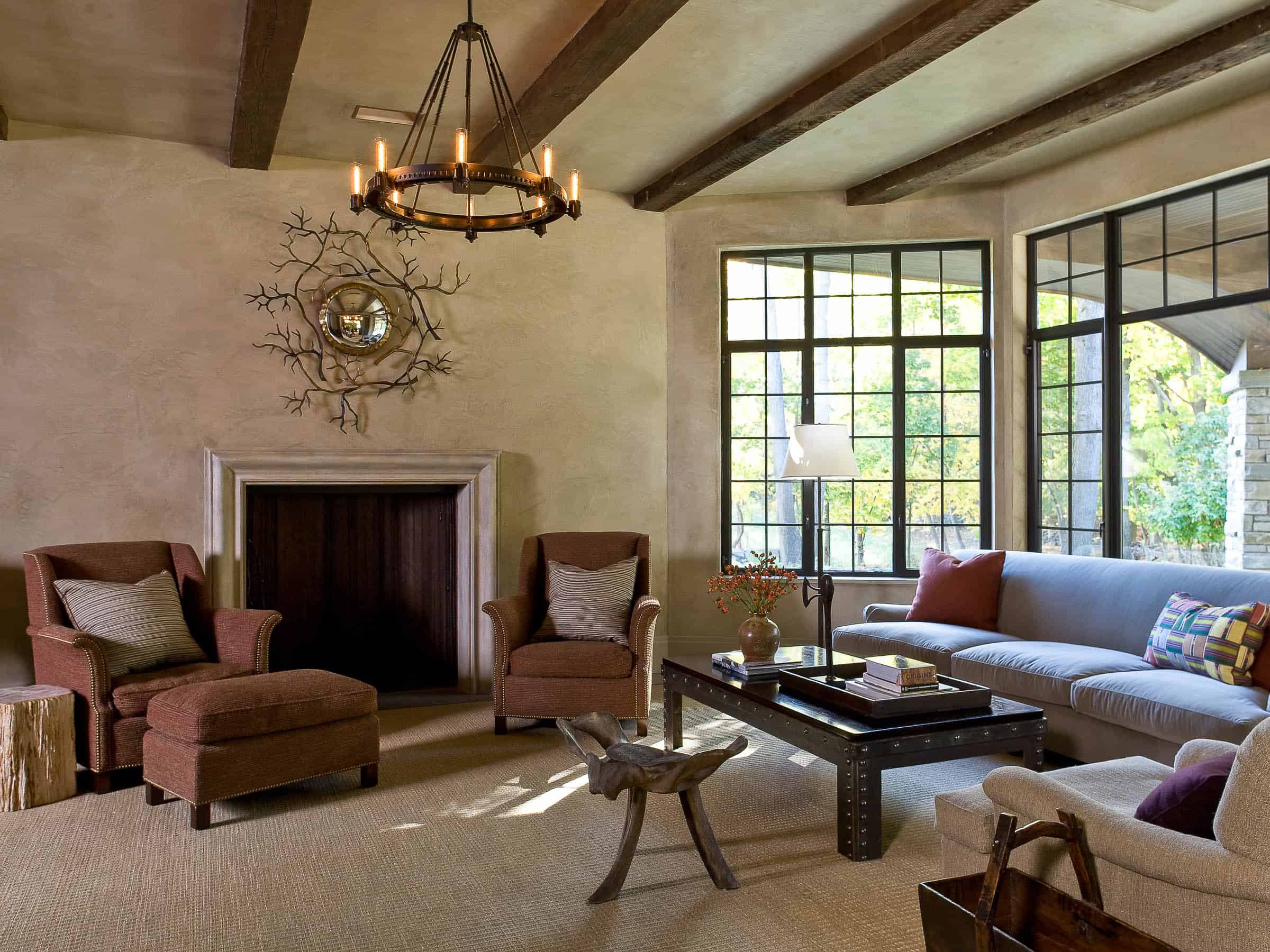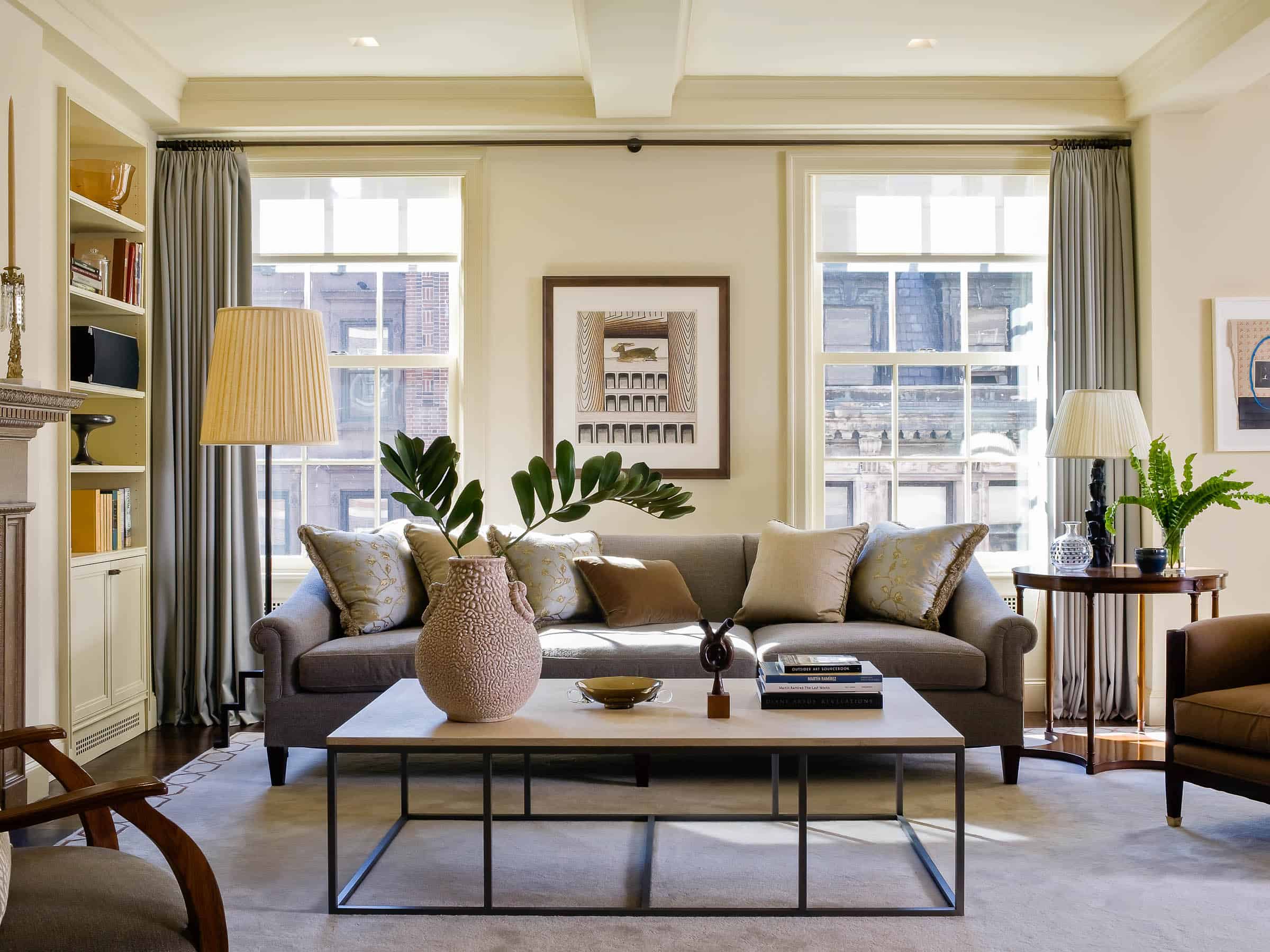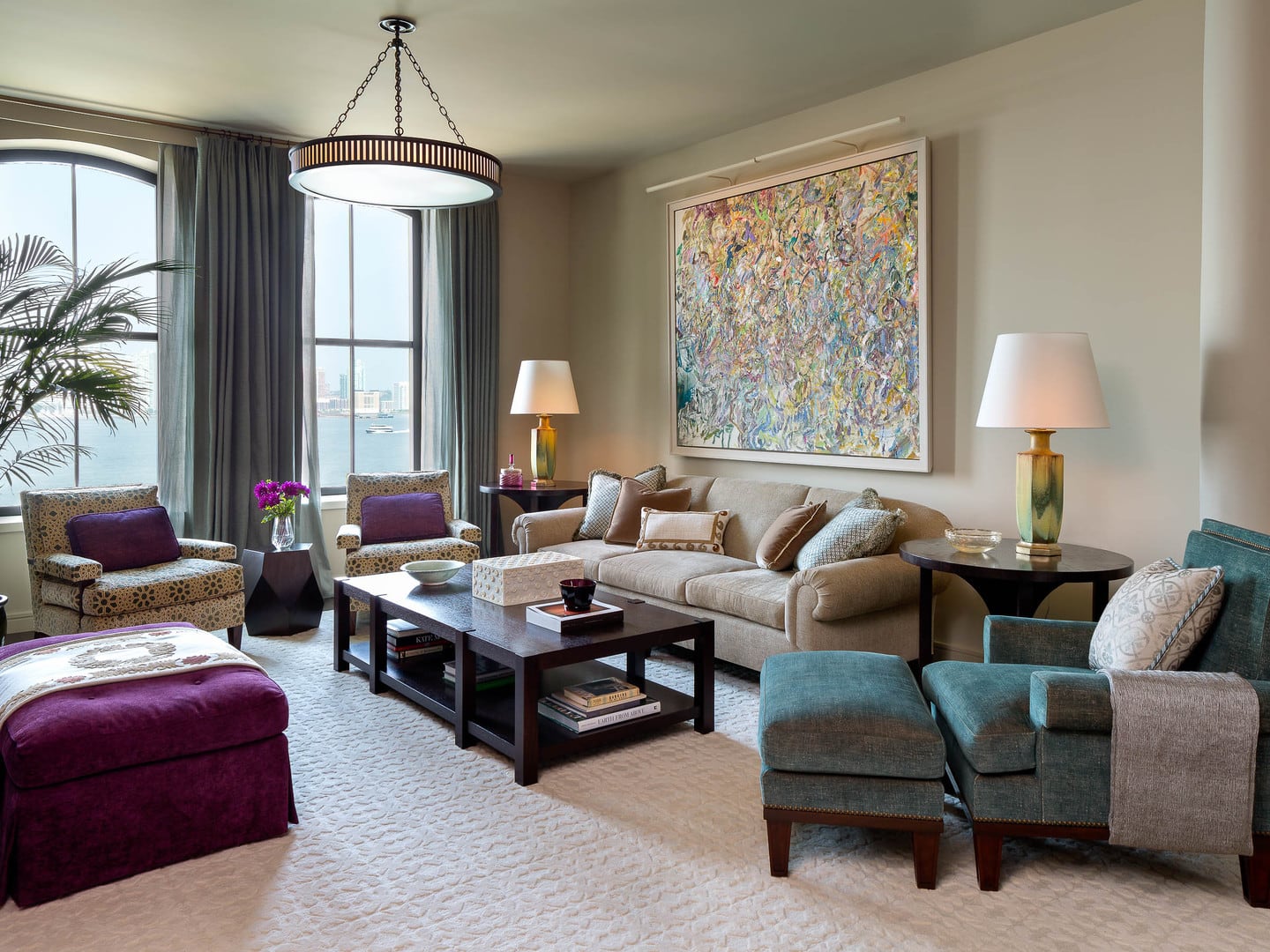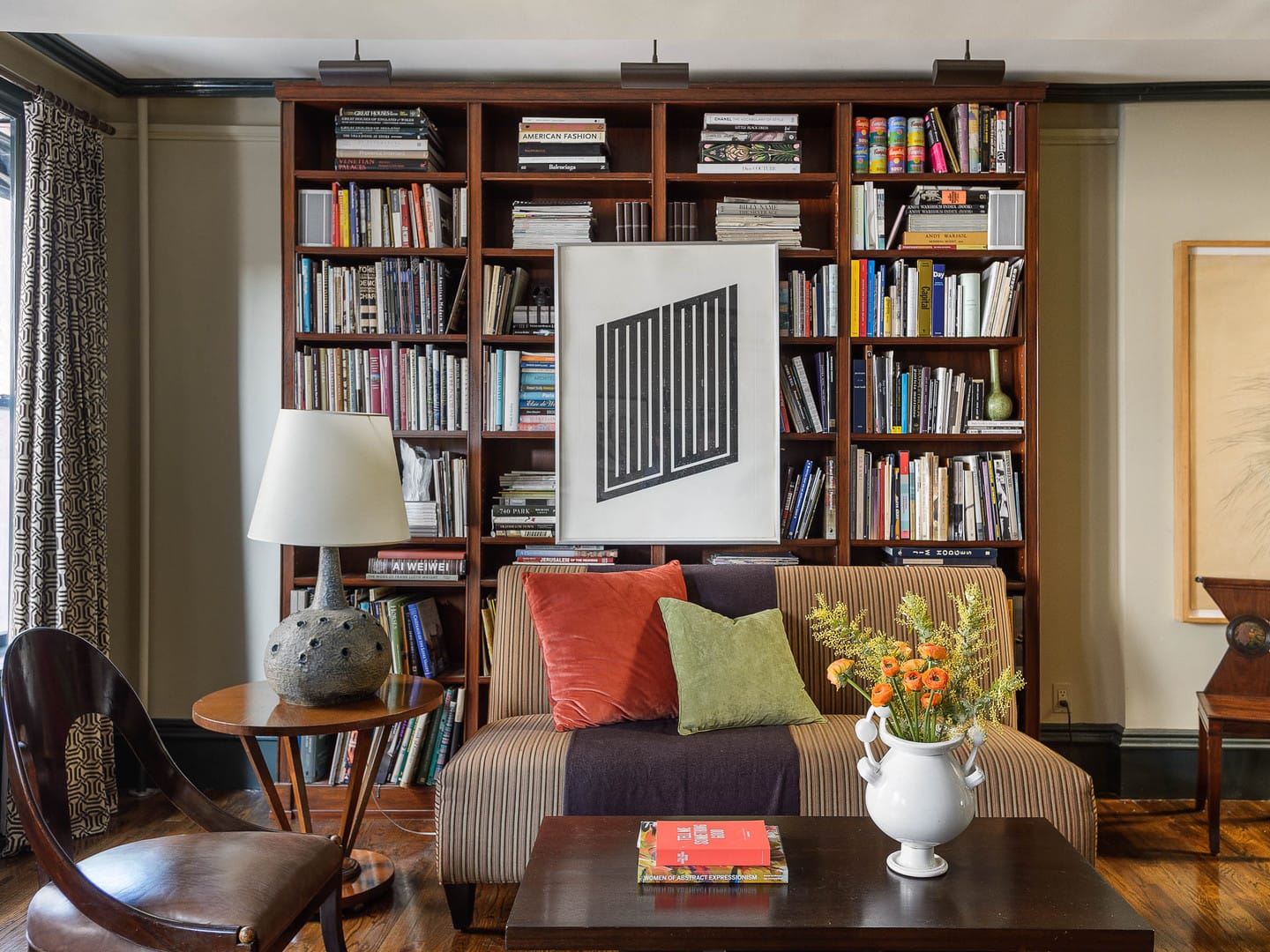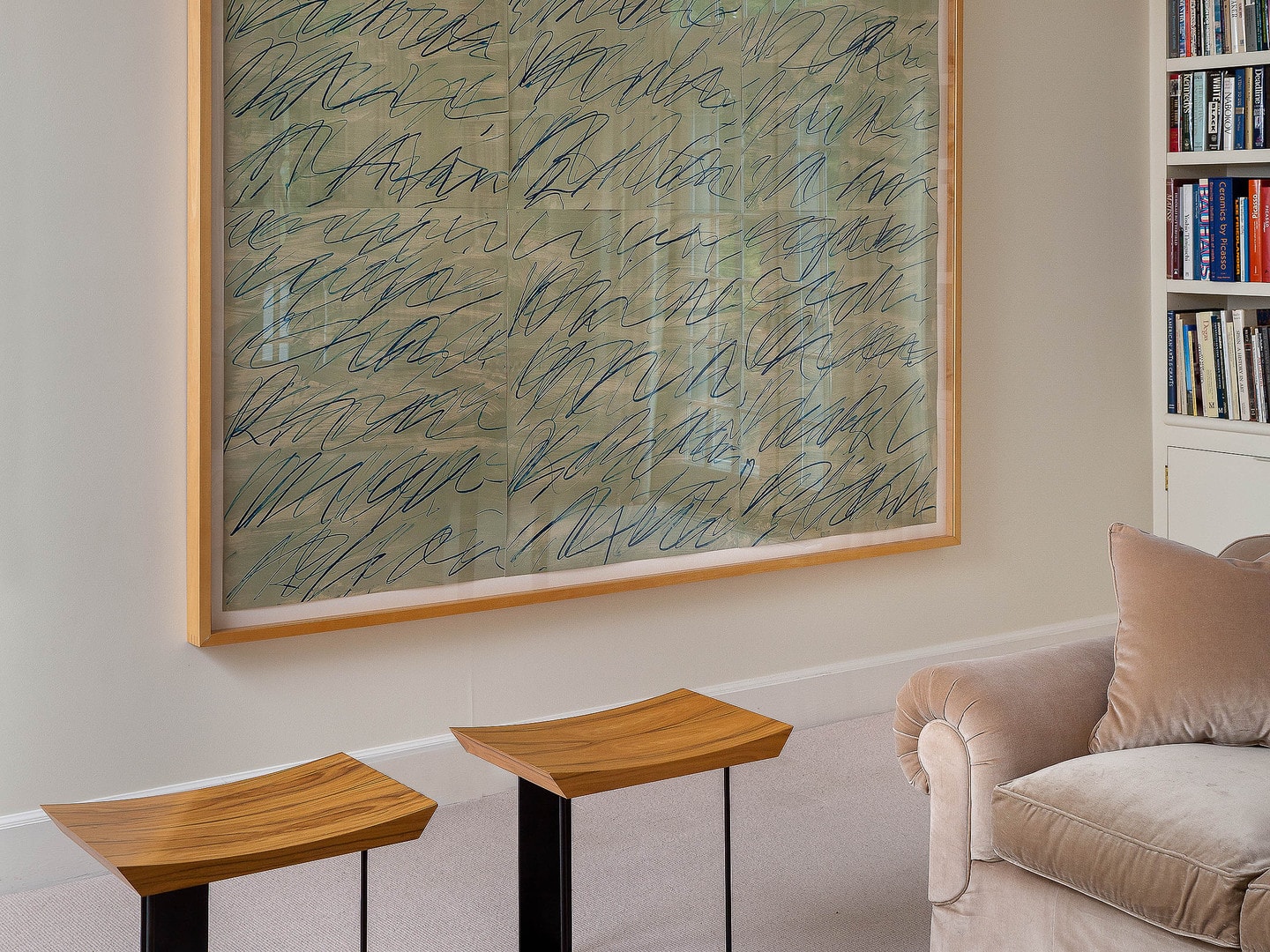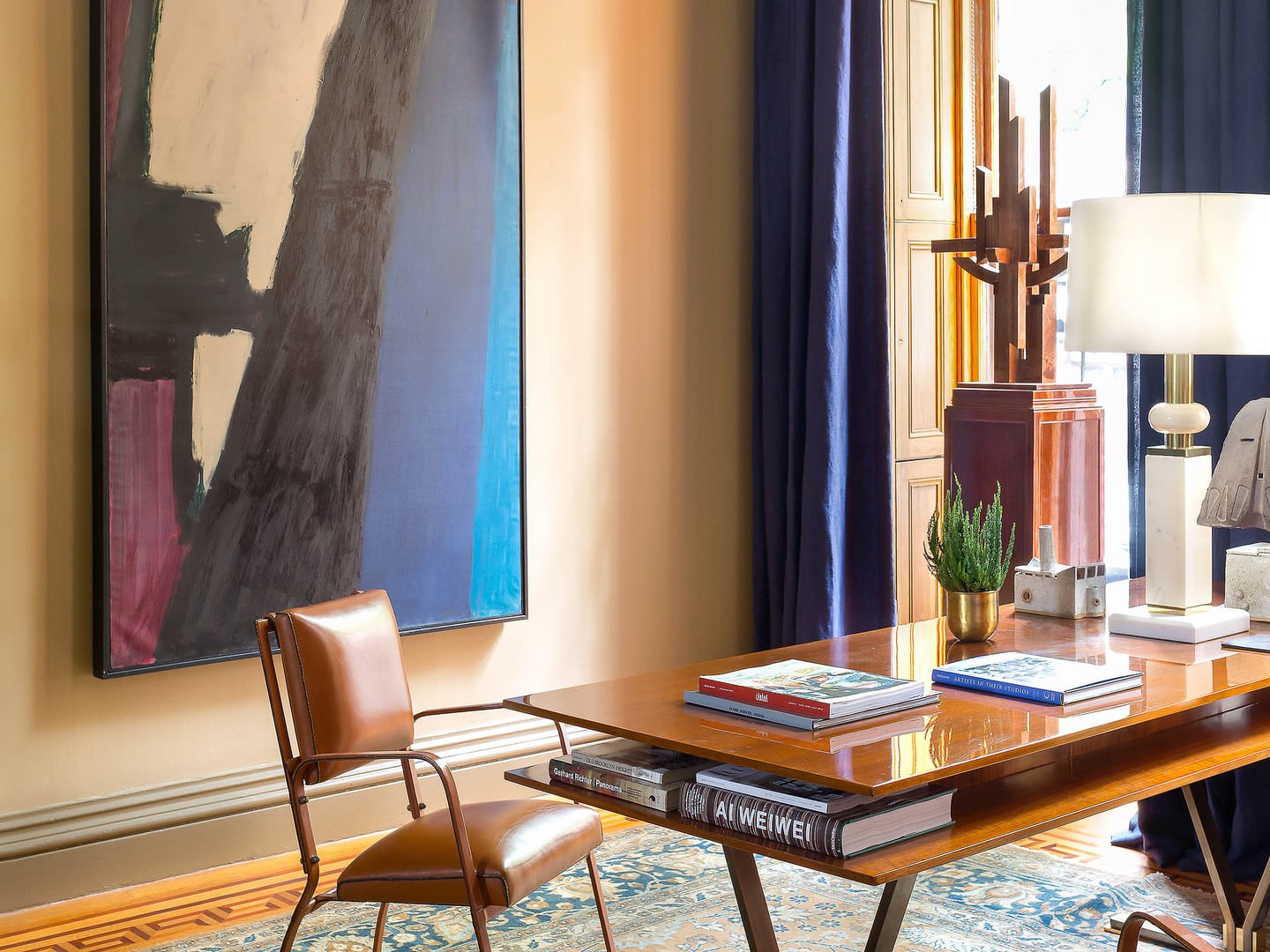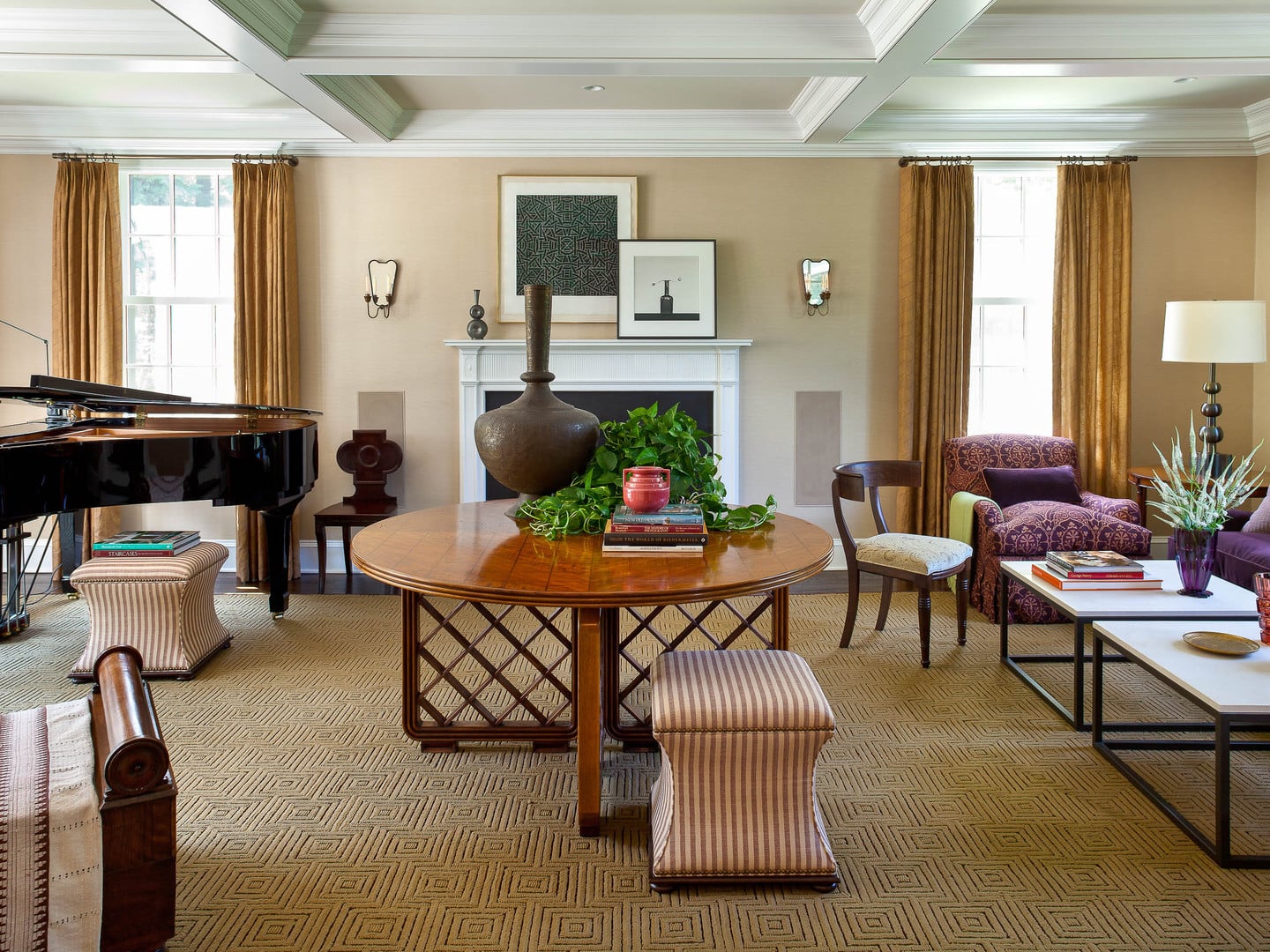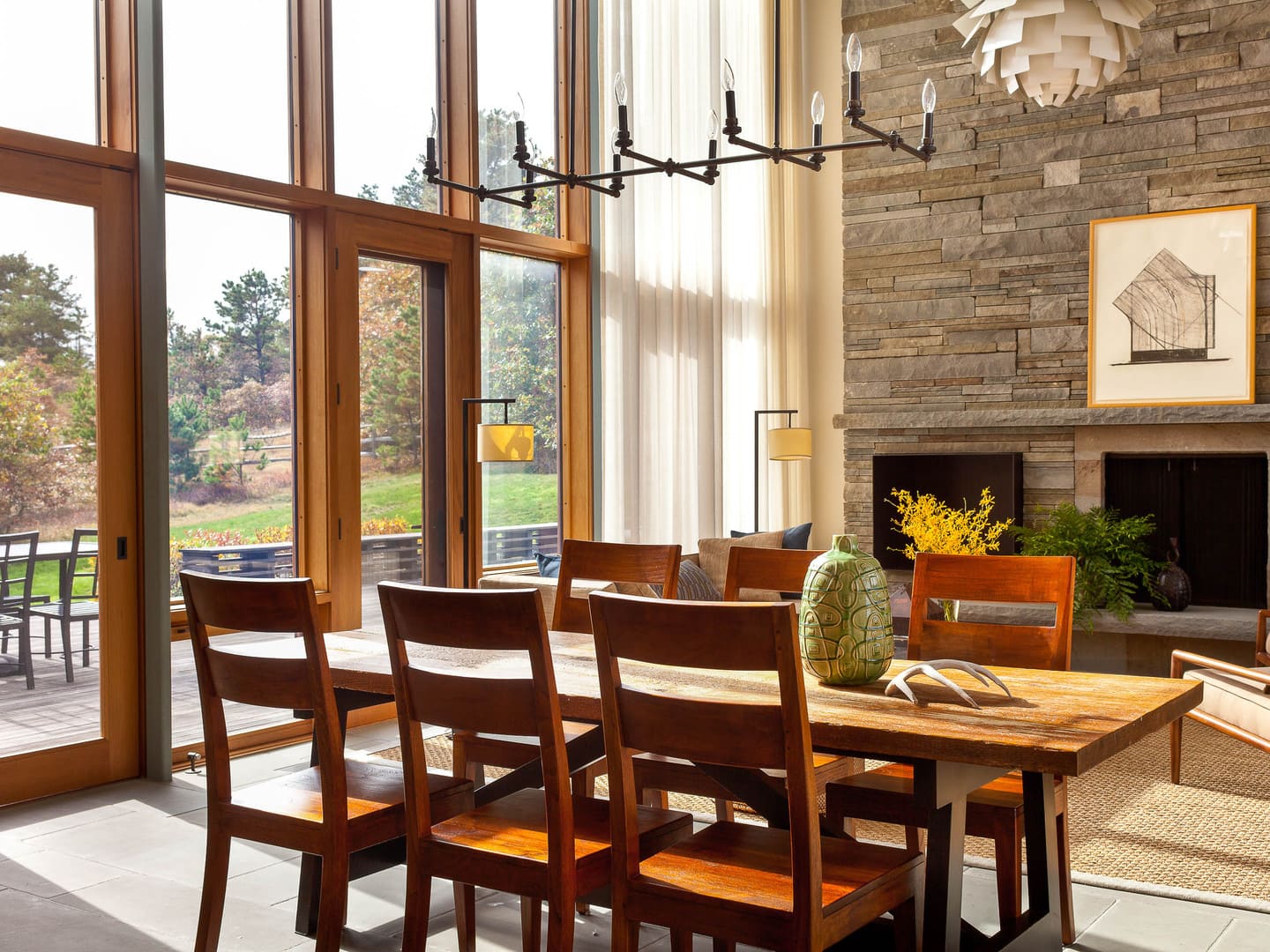Mature globe boxwoods were moved from the paddock behind the house to soften the transition between the road and the front door. A sea of pachysandra enhances the effect. Many of the stone walls and walkways around the property appear ancient but were lovingly added over the years by Gissler and a supremely talented local stone mason.
LITCHFIELD, CT
Connecticut Farmhouse
Having fantasized about owning a weekend retreat within driving distance of New York City for nearly three decades, Glenn Gissler finally found this historical yet unassuming Greek Revival farmhouse on eight acres in Litchfield County, Connecticut. Reviewing his wishlist for a home, the property appealed for many reasons, not the least of which is that it is surrounded by three hundred acres of the Roxbury Land Trust, which ensured the pristine land adjacent to the property would continue in perpetuity in its magnificent, natural state.
Initially established in 1840 as the Ezekial Beardsley Homestead, the main house was sensitively expanded over the decades, meaning no immediate structural changes were necessary. So Glenn first focused on the sprawling landscape, removing spent trees and opening a bucolic vista beyond a discrete swimming pool. As the seasons progressed, he focused on the pleasant rooms beyond the facade’s pedimented portico.
Like many designers before him decorating their homes, Glenn carefully considered each finish, furnishing, and detail, ultimately creating a house with rooms that reflect his extensive knowledge of the decorative arts and inflected with the burnished colors and classical patterns that define his aesthetic.
And as an avid entertainer, the home’s four bedrooms provide for a steady stream of eclectic guests, while a well-equipped kitchen and sprawling dining room that seats ten stands at the ready for dinners near the home’s original fireplace. With a sense of joy and abundance, Glenn sees his house as a place to be shared with friends and family where fun, playful, and considerate guests always get invited for return visits.
Beyond the home’s backdoor and through a split rail fence, summer visitors are greeted by an unobtrusive pool and a former art studio dubbed the “Pleasure Pavilion,” where a swim follows rustic lunches. Several weathered Adirondack chairs rest below a mature Sugar Maple tree, providing a respite from the midday sun.
The swimming pool was existing when Glenn purchased the house. He left the coping, but removed the awkward patios to allow it to fit quietly into the backyard landscape as a reflecting pool. The property expands beyond the back gate for some distance before connecting to hundreds of acres of the Roxbury Land Trust’s many preserves.
The breakfast room has a simple round pedestal table paired with directors’ chairs. The tableau is comfortable and unassuming, inviting guests to enjoy coffee while watching the mist burn off the morning landscape, the birds visit the feeder, and a few chipmunks scamper about. The Russell Wright servicewear is part of an extensive collection that could serve an expansive buffet dinner.
The kitchen retains its farmhouse sensibilities but was updated with modern appliances. Muted-sage green cabinetry and trim are offset by black granite counters and the original floors, which Glenn stained dark walnut throughout. Period-style fixtures and pendant lights hang from the beadboard ceiling to illuminate the space.
In the entry hall, a pair of circa 1830 hall chairs rest atop a custom ‘falling block’ patterned hook rug, which Glenn designed for the space. Above the chairs, in what amounts to a mid-20th-century artistic dialog, are works by Alexander Calder (left) and Le Corbusier (right). The Calder is the first work inside the house, which Glenn chose because Calder’s homestead and studio–still maintained by the late artist’s family–are less than two miles away.
The library’s furnishings, woven together like a historical tapestry, tell the story of Glenn’s interest in 19th—and 20th-century design. Pieces include a coffee table by T.H. Robsjohn Gibbins for Widdcomb, a 1940s sloping-arm sofa draped in an antique Suzani, and a Greek temple model found at a yard sale perched atop a marble pedestal. Part of his collection of objects by late 19th-century designer Christopher Dresser is presented on the top shelf of the etageres. The ceiling is covered in Farrow & Ball bumblebee paper.
Just inside the library, a circa 1820 Biedermeier Bar Cabinet is stocked with spirits, where guests are encouraged to help themselves to a cocktail. Hanging above are works on paper by Wilfred Zogbaum (left) and Tomas Eldred (right). The Klismos Chair, one of a pair, is attributed to T.H. Robsjohn-Gibbings.
A large-scale painting on paper by Melinda Stickney-Gibson takes pride of place at one end of the dining room, which is furnished with a 10-foot antique table and a set of leather-covered Anglo-Colonial X-back chairs that have been in Glenn’s possession for more than thirty years. At left, an 18th-century English server rests beneath a large mirror that amplifies the glow of a chandelier that Glenn designed.
Vintage Siapo Tapas rendered on barkcloth from Samoa, encircled in a broad gilt frame, add a cross-cultural reference on the opposite side of the dining room. The pattern is meant to depict Oceana’s flora and fauna stylistically. For Glenn, it also recalls Indian tantric paintings for meditation and barn decoration by Amish farmers.
In this view of the living room, an unusual 19th-century Thebes chair fashioned from slender bamboo branches sits in front of a pair of cocktail tables by T.H. Robsjohn-Gibbings. Directly above the fireplace is Untitled (Dollar Bill) 2000 by Thomas Friedman; to its left is a portrait by the late Donald Baechler, which was Glenn’s first art purchase after arriving in New York.
With a flat-screen TV hanging on the adjacent wall, this armless corner sofa affords ample seating for movie viewing, especially on chilly winter evenings with a crackling fire. Chunky seagrass matting underfoot grounds the tableau.
The furnishings in this corner of the living room include an English Arts & Crafts table, a pair of 1940s French Bergeres covered in lush velvet, and a vintage industrial-inspired lamp. It’s the perfect spot for an intimate dinner for two or as a sun-splashed work desk. The art includes a piece by David Dupuis (left) and an anonymous tantric work from India (right).
A second custom-designed hook rug rests on the upstairs landing, which features the home’s original spindles and handrail. A pair of African masks adds a tribal note.
Artworks by Roberto Matta hang above an 18th c. William & Mary bureau purchased at auction in this bedroom, which features a minimalistic four-poster bed dressed in vintage textiles. To the right of the window is a work by artist Nancy Spero. Because the room has no closet, Glenn attached shaker knobs at intervals around a high molding so that guests could hang their travel clothes. Two boudoir wing chairs provide seating.
Maintaining a through line between the house’s past and present was paramount, so Glenn kept the existing mustard-yellow toile wallpaper in the primary bedroom to acknowledge the previous owners. By day, ample sunlight streams through the room’s large casement windows; in the evening, a pair of James Mont’s Open Helix Lamps from the 1950s illuminate the space.
An ever-expanding collection of surrealist artworks animates the room, including works by Leon Golub, Alphonse Osorio, Gary Gissler, Pidder Auberger, James Siena, Hans Bellmer, Jacqueline Lamba, and Richard Tuttle. Also in the mix is a work by artist David Hare, a previous house owner. The framed works are installed almost randomly, referencing how the late Peggy Guggenheim displayed art in the Surrealist Gallery at her groundbreaking New York gallery, Art of This Century.

![GrossAndDaley_GGissler_Goodhill_01 Built in 1840, the Greek Revival farmhouse would become a haven for some of the 20th century’s most celebrated artists. Designer Glenn Gissler removed the shutters from the home’s windows to achieve an “ecclesiastical purity [for] the Greek temple front” that offers a more contemporary appearance.](https://gissler.com/wp-content/uploads/2024/09/GrossAndDaley_GGissler_Goodhill_01.jpg)

















